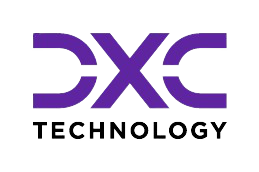Introduction
The Government of India felt the need for a permanent agency to expedite the publication of standards and the development of test facilities concurrently with the preparation of standards, as the development of improved standards for safety-critical parts can only be undertaken after the publication of the standard and the commissioning of test facilities.
The need emerged to minimize the environmental impact of End-of-Life Vehicles (ELV), thereby contributing to the protection, preservation, and enhancement of the environment’s quality and energy conservation.
In addition, it was realised that the ELV regulation cannot be the only solution to make auto recycling an organised sector in the country, nor is it the only measure to make auto recycling an environmentally beneficial process. Nevertheless, this may be one of the many required stages for this purpose, and a crucial one at that.
Scope
These requirements will specify how to set up a registered vehicle scrapping facility (RVSF). These will apply to all category of vehicles and their last registered owners, Automobile collection centres, Automotive Dismantling, Scrapping and Recycling Facilities and recyclers of all types of automotive waste products.
Part 1
Collection and Dismantling of End-of-Life Vehicles
AIS-129 (Part 1) applies to all categories of vehicles and their last registered owners, automobile collection centres, automotive dismantling, scrapping, and recycling facilities, and all varieties of automotive waste product recyclers.
SCOPE
These rules shall apply to:
- Last owner of End-of-Life Vehicles (ELV)
- Collection and dismantling centres treating M1, L1 and L2 category end-of-life vehicles.
Category of Vehicles: –
- L Vehicles
- M Vehicles
- N Vehicles
- Other Vehicles
PART 2A
HEAVY METAL RESTRICTION, DISMANTLING INFORMATION
Scope
This specification applies to vehicle manufactured in India or imported to India for sale in India and type-approved in accordance with CMV Rule 126.
The requirements of this Part – 2A of the standard shall not apply to:-
- ‘Special Purpose Vehicles’ as defined in AIS-053, as amended from time to time.
- ‘Small volume production models’ as defined in AIS-017, as amended from time to time.
Category of Vehicles: –
- M1 Vehicles
- L1 Vehicles
- L2 Vehicles
PART-2 B
TYPE APPROVAL OF VEHICLES WITH REGARD TO THEIR REUSABILITY, RECYCLABILITY AND RECOVERABILITY (RRR)
Scope
This specification applies to vehicle manufactured in India or imported to India for sale in India and type-approved in accordance with CMV Rule 126.
The requirements of this Part – 2B of the standard shall not apply to:-
- ‘Special Purpose Vehicles’ as defined in AIS-053, as amended from time to time.
- ‘Small volume production models’ as defined in AIS-017, as amended from time to time.
Category of Vehicles: –
- M1 Vehicles
- L1 Vehicles
- L2 Vehicles
Conclusion: –
More than 30+ million vehicles due for scrapping vehicles which are manufactured and sold
before 2000. And these vehicles does not meet even Bharat Stage (BS 1) emission norms and
safety norms compare to the existing vehicles. These old vehicles are polluting higher emission
to the environment and also one of the reason of causing road accidents due to often
breakdown in these vehicles during playing on road. And AISC working group have already
prepared ELV standard for India, the standard called as “AIS-129” (Automotive Industry
Standard), which has been approved in 2015 however automotive industry is waiting for the
final notification for the implementation.
Source: – https://hmr.araiindia.com/api/AISFiles/AIS-129%20and%20Amd%201_55eca11a-2aa8-47a5-b62d-4ad3029921c4.pdf








 Authorised IMDS & CDX Training & Consulting partner for
Authorised IMDS & CDX Training & Consulting partner for







